A Museum Like No Other
The Peabody Essex Museum’s new wing gives new life to one of the best art institutions in the country.
Sponsored by the Peabody Essex Museum
About a decade ago, officials at the Peabody Essex Museum (PEM) in Salem, Massachusetts, faced a welcome but daunting challenge. The more-than-two-century-old institution was running out of exhibit space, and solving the problem called for more than just reconfiguring some galleries, or maybe adding one or two new ones to the mix. No, PEM needed something grander, something more elevated, as it aimed to not just showcase its expanding collection — which numbers well over a million works of art and culture — but also serve the needs of 21st-century museum visitors.
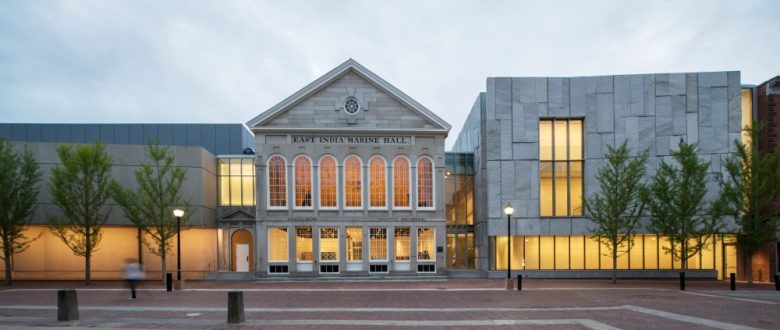
Photo Credit : Peabody Essex Museum
“By 2022, virtually everything at PEM — in terms of the experience of our collections — will be new and very different than it has been in the past,” Dan Monroe, then the PEM’s director and chief executive, told reporters in 2016. (Monroe, who had guided the museum since 1993 and overseen the institution’s greatest growth, retired in 2019; his successor, Brian Kennedy, took over that summer.) “We’re basically changing everything.”
Three years after Monroe declared PEM’s ambition, the museum officially opened the doors to a new 40,000-square-foot wing. Designed by the New York firm Ennead Architects, the $125 million addition includes a 15,000-square-foot gallery space, a light-drenched atrium, and a garden by landscape architect Nelson Byrd Woltz. The expansion houses three new galleries: Maritime Art, Asian Export Art, and Fashion & Design. With its growing collections and expanded footprint, PEM is now one of the largest art museums in North America.
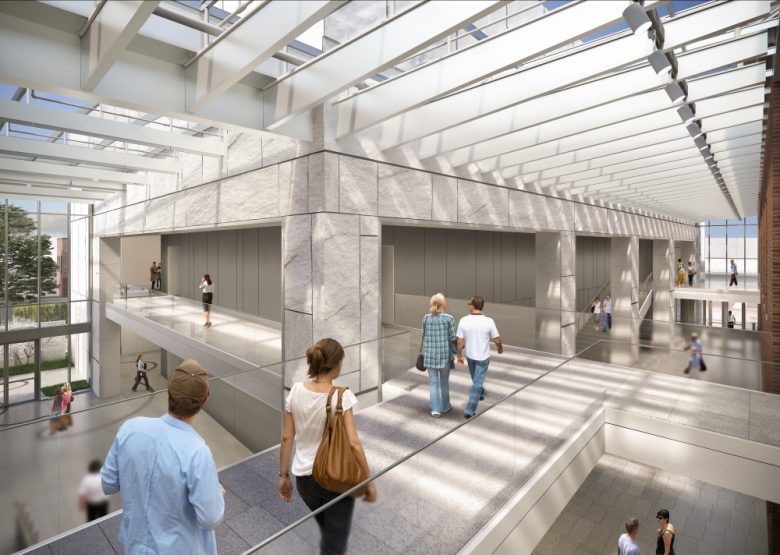
Photo Credit : Peabody Essex Museum
For those who aren’t familiar with PEM, that last little factoid may sound surprising, but it’s true. PEM’s founding goes back to 1799, when early American mariners launched a novel plan: to create a publicly accessible place for showcasing the treasures and sharing the stories they had brought back from the farthest reaches of the world.
“It was really like going to the moon, at the time,” explains PEM’s director of communications, Whitney Van Dyke. “It was incredibly hard, incredibly expensive, and they were desperate to show off what they’d returned with from these far-off places. That just wasn’t done, at the time, in early America. Making them available to the public was a relatively new concept.”
East India Marine Hall, the museum’s first building, was dedicated in 1825 by President John Quincy Adams. Constructed of granite quarried in nearby Chelmsford, Massachusetts, and topped by an intricately designed gable roof, the building is now a National Historic Landmark.
In the two centuries since its main building first opened, PEM has grown and evolved like few other museums in the country. There have been eight expansions in the institution’s history, including a 2003 overhaul that added five new exhibition galleries, an auditorium, and a grand new atrium that welcomes visitors at the main doors.
Today, while other institutions across the country have seen visitor numbers decline, PEM, the oldest continually operating museum in the United States, has bucked the odds. Nearly 300,000 people visit PEM annually, and through its partnership with other high-profile institutions, such as London’s Victoria and Albert Museum and the Palace Museum in Beijing, another 1 million witness its traveling exhibitions each year.
The museum’s latest expansion puts a spotlight on PEM’s longstanding efforts to not just showcase the work of faraway cultures, but also reveal the interconnectedness of art forms across borders, both real and imagined.
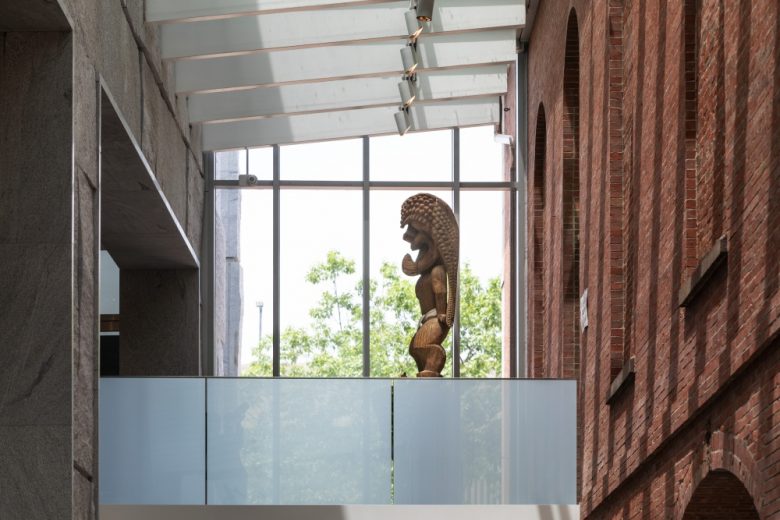
Photo Credit : Peabody Essex Museum
One of the earliest pieces installed in the new wing is a sculpture of the Hawaiian god Ku. A longtime part of PEM’s collection, the 200-year-old temple image was acquired by one of the museum’s early donors in the mid-19th century, a time when Native Hawaiian religious icons were being systematically destroyed. The carving, made from breadfruit wood and standing more than 6½ feet tall, is one of only three such works of this size still in existence.
The sculpture’s new home gives it prominent placement on a skybridge in the new atrium, in front of a large main window that overlooks the pedestrian walkway in front of the museum. A delegation of Native Hawaiian cultural practitioners accompanied the crated relic during its relocation and helped ensure the process was clear of any metaphysical obstacles. A ceremony to mark the sculpture’s new home followed.
Other pieces are getting new life as well. In the new Maritime Art Gallery, PEM has expanded its concept of seafaring life and through various media puts a focus on our universal attraction to the sea — its dangers, its high risk, and its high rewards. There are paintings, boats, and other nautical artifacts whose beauty and stories are unlocked in the gallery.
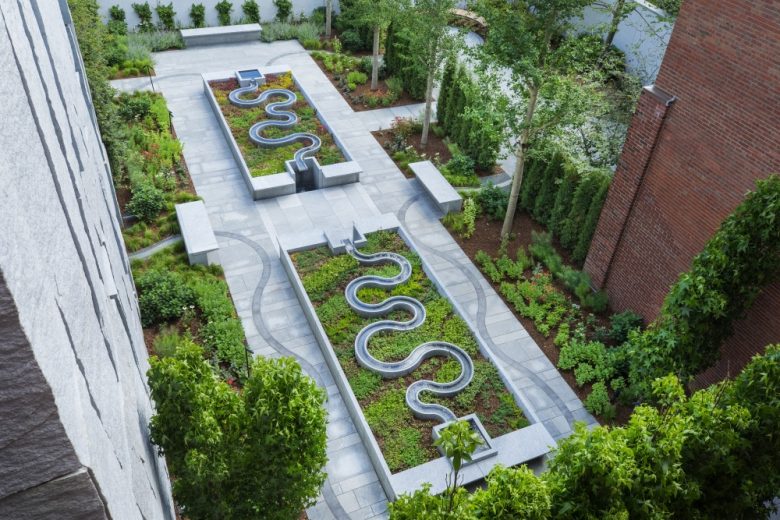
Photo Credit : Peabody Essex Museum
One of the most unassuming but fascinating objects is a calendar stick made by a man whose unfortunate name (James Drown) was accompanied by an unfortunate fate. After his ship went down, he found himself a castaway on a remote Pacific island for more than a month. To maintain his sanity and sense of time, he recorded his days on a piece of driftwood. Drown was finally rescued, and, seven years after he originally left, he returned to his home in Rhode Island only to find that his family had moved on. His wife had even remarried. It was probably not the kind of homecoming he’d imagined.
Not far from Drown’s calendar stick sits a 2,700-pound, 22-foot-long model of the ocean liner Queen Elizabeth. Billed as the largest model ever made, the ship, which was hand-carved from a single piece of mahogany, was originally commissioned in 1947 by a high-profile New York City travel agency to furnish its palatial offices on Fifth Avenue. According to PEM’s records, “the intention … was to awe the viewers with the power and magnificence of the vessel and to entice them to book passage aboard” the actual Queen Elizabeth.
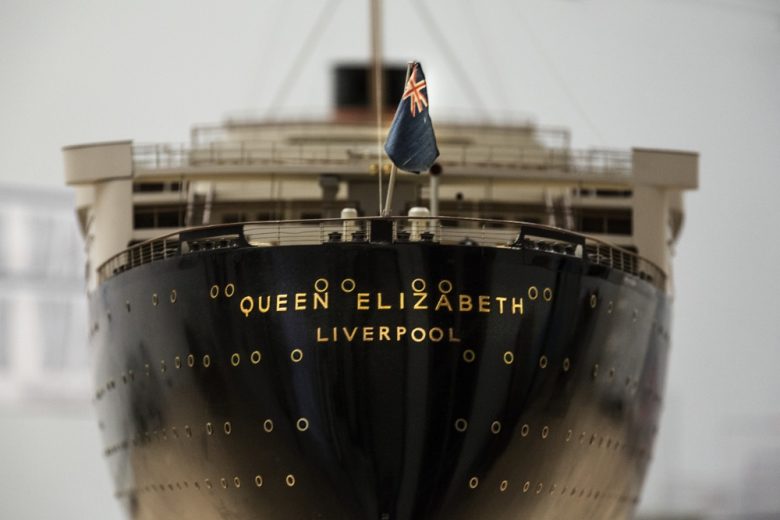
Photo Credit : Peabody Essex Museum
While globalism may seem like a uniquely modern concept, PEM’s second-floor Asian Export Art Gallery illuminates how the complex dynamics of international relations and trade have existed for centuries. With works in diverse media by artists in China, Japan, and South Asia, this collection demonstrates the beauty and ingenuity of transcultural objects created through blending artistic traditions, materials and technologies.
One of the highlights of the space is an enormous piece of wallpaper art that depicts in fine detail what life in a Chinese trading port in the early 19th century looked like. The painting, which covers the walls of its own small gallery space, was commissioned by a Scottish nobleman who’d spent nearly 20 years in China heading up a trade post. “As he got ready to return to Scotland, he wanted something that told the story of where he’d lived and what he’d experienced that he could display in his castle,” Van Dyke says.
But this is more than just a pretty piece of art for visitors to look at. It also reflects the considerable research that PEM has done over the years to better understand how people engage with art: what holds a viewer’s interest, for instance, in a society where an abbreviated “swipe-left” attention span is increasingly common.
That research has led the museum to heighten the drama of its installations, create smaller exhibition spaces, increase interactive elements, and providing resting places around its campus so that, as Van Dyke says, “visitors can recharge and get their museum legs back.” As museumgoers make their way through the wallpaper-art scenes, for example, they’re accompanied by sounds that give dimension and add to the stories the images describe.
On the third floor of the new wing, the Fashion & Design Gallery brings a unified understanding of how humans are designers. All manner of design has a home here, from furniture to fashion to skateboards. The star here is a gallery named after fashion icon Iris Apfel and her late husband, Carl, which features a rotating selection of items from Apfel’s own collection of more than 800 wardrobe pieces.
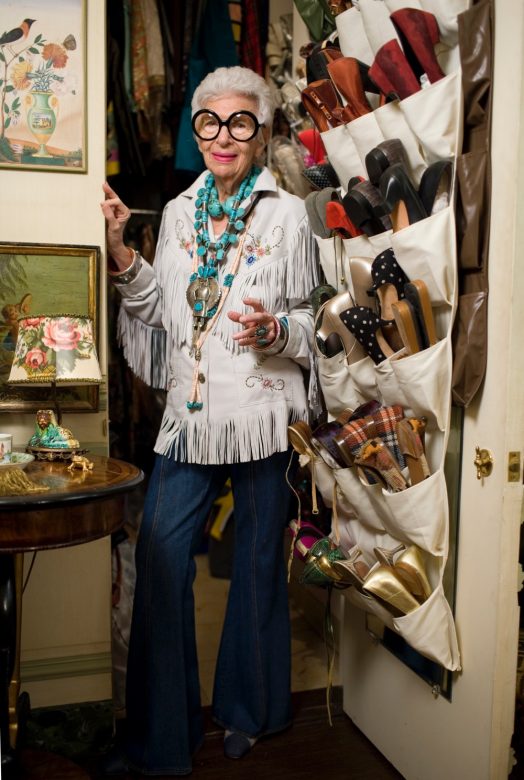
Photo Credit : Peabody Essex Museum
The new wing and the revamping of existing gallery spaces is just the beginning for PEM. Over the next three years, the museum will continue to feature new installations and new presentations of its collections. This includes a gallery that puts the museum’s exquisite American art pieces in dialogue with its Native American art collection, which is the oldest of its kind in the Western Hemisphere.
Additionally, PEM will open a meditation gallery to provide an opportunity for museum visitors to connect both culturally and spiritually. Also in the works is a new gallery dedicated to the interpretation of Yin Yu Tang, the 200-year-old house from China’s southeastern Huizhou region, that was brought to Salem and reconstructed on PEM’s grounds some two decades ago.
As times change, so does PEM. Visit today.


